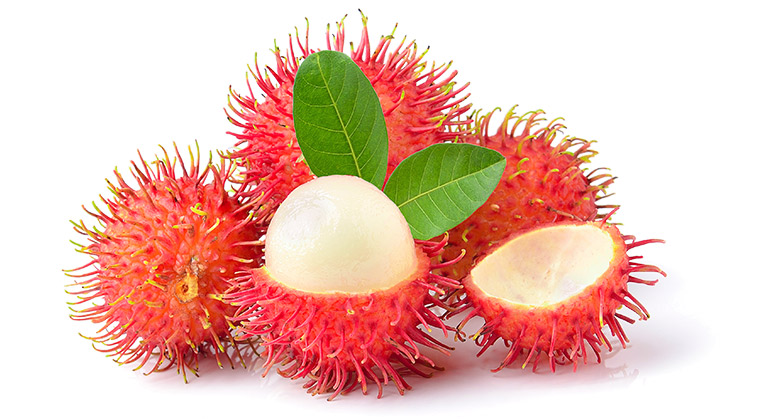Exotic Fruits


In my family, the shehecheyanu part of the Rosh Hashanah seudah sees us all trying to remember what all those exotic fruits look like on the inside, which ones are worth tasting, and which ones are, uh, not. Here’s a guide to the fruits that might wind up on your table this year.
Name: Rambutan
Nickname: Chom-chom
Origin: Southeast Asia, including Thailand, Malaysia, Indonesia and Vietnam.
Description: The peel of this fruit is red with hairy spines sticking out all over it, making the fruit look much scarier than it actually is. Get rid of the peel, and you’re left with something that looks a lot like the inside of a lychee, only a little larger. One bite of the white or pinkish flesh will tell you that this was a good choice. It’s sweet and sometimes tastes a little like grapes. Most people throw out the long brown seed that’s inside, but it can actually be cooked and eaten.
Name: Tamarind
Origin: Africa and South Asia
Description: The tamarind fruit is a long pod with a hard brown shell. It looks a bit like a carob, except that it’s more rounded. Pods can contain one to twelve seeds. You can easily tell how many seeds are inside by counting the bumps along the pod. Crack open the shell and you’ll find a brown fleshy pulp that’s hiding the seeds, along with a brown string. Pull off the string and suck at the pulp, making sure not to eat the actual seeds. It’s usually a little sticky and tastes a bit like dates. Store them in the fridge to keep them moist.
Name: Kiwano
Nickname: Horned melon
Origin: Sub-Saharan Africa
Description: This fruit really stands out from the crowd, with its thick orange, spiky skin and slimy green pulp inside. It’s a cousin to the cucumber and melon, which is obvious the minute you slice it open and see the hundreds of white seeds floating around the pulp. Spoon out the pulp. It tastes like a combination of bananas, passionfruit, cucumber, and lime. You can add it to a smoothie for a refreshing kick.
Name: Longan
Origin: Southern Asia
Description: Longan is a berry that’s related to the lychee and rambutan. It has a smooth, light brown shell. It’s usually sold in clusters, still attached to the stem, to help it stay fresh longer. On the inside, it looks a lot like a lychee, with translucent white flesh around a black seed. In Chinese, “longan” means “dragon’s eye,” and the fruit is called so because it looks like an eyeball.
(Excerpted from Mishpacha Jr., Issue 726)
Oops! We could not locate your form.







